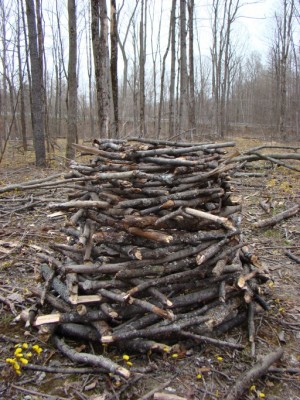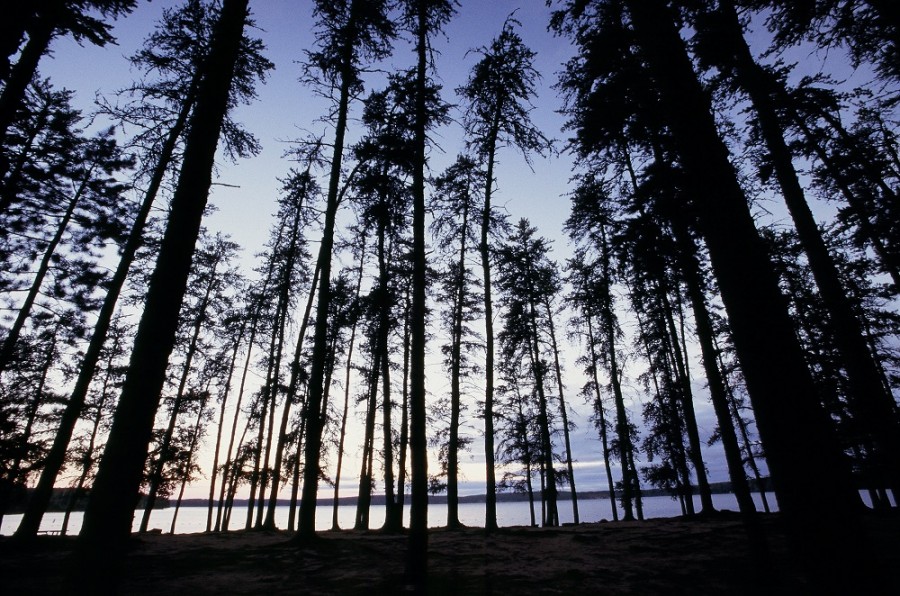Today’s post comes from Park Naturalist Roger LaFontaine, a classically trained biologist and amateur Sasquatch researcher. He has spent nearly two decades researching and documenting the occurrence of Sasquatch in Ontario.
I have always had an interest in the creatures that others were not fond of: invertebrates under a log, salamanders in the soil, nocturnal creepy crawlies, and even a shy mammal that stays just beyond the light of my campfire.
My interest in obscure creatures began many years ago when I found a strange track along the bank of a river…

Do unknown species make their homes in Ontario’s wilderness?
Despite being Canada’s most populous province with heavily industrialized regions, Ontario is still a pretty wild place.

Ontario Parks has been protecting important areas since 1893, and the more than 330 provincial parks cover approximately 10% of the province. These protected areas offer opportunities to preserve habitats in a rapidly urbanizing world and to conduct important research, especially about species at risk.
While many parks have detailed inventories about their flora and fauna, others may never be fully catalogued.
And some species are exceptionally difficult to detect.
The case for Sasquatch
Also known as “Bigfoot,” the Sasquatch is described as a large, hairy ape, more commonly known to inhabit western Canada. Sightings do occur in Ontario, often made by credible eyewitnesses. However, while we can all envision the figure or silhouette of Sasquatch, few of us have seen the real thing.

Researchers believe that Sasquatch is a relict species of giant ape, Gigantopithecus blacki, known from Asian fossils dating back several million years. It is thought that — like so many other North American animals, including moose — Gigantopithecus crossed the Bering Land Bridge from Asia to North America during the Pleistocene Epoch.
Sasquatch is usually described as being two to three metres tall, with long arms, hunched shoulders, no neck and a sloped head. The very hairy body can vary in colour, with black, dark to light brown, gold and even white pelage reported.
Sasquatch sightings

In many parks, campers have reported sightings to staff, mostly as fleeting glimpses of a giant ape running across a trail, portage, or road. Occasionally, strange noises are heard around a campfire. Others simply report the “feeling of being watched” while in the woods.
Other signs are left by the Sasquatch include carefully made stick piles, scratches on trees, and — of course — enormous, human-like footprints in mud or snow.

While difficult to substantiate, these observation are indeed of value to Sasquatch researchers
What we do know? Sasquatch:
- Are omnivorous, feeding on plants, roots, berries, fungi, and — when available — meat
- Are social creatures, often travelling in small groups or families. Many observations are first made of a juvenile Sasquatch, then a parent tending to it or carrying it
- Are quite capable of hiding near humans, despite their size. They are also very quick, and can disappear into dense brush silently. Many Sasquatch engage in “tree peeking” (hiding behind or between trees)

- Communicate through vocalizations. They may even possess a voice and language not dissimilar to humans
- Maintain a naturally low population, scattered on the landscape. They may be semi-nomadic to avoid over-harvesting or degrading their habitat
- Are curious about humans and our activities, as they are documented to observe us from safe vantage points, and have historically proven completely harmless to humans
Does the Sasquatch need our protection?
In conservation, some species are “keystone species” — meaning the ecological effect of one species maintains many important habitat features for a variety of others.

Other species are “umbrella species” — the protection and conservation of one species protects a multitude of others.

While the Sasquatch has not been formally listed on official Life Sciences Inventories in any park, it is thought to inhabit some of the more remote parks in the province and needs large protected areas to survive.

Researcher Dr. Pat “Squatchy” Pratt suggests that Sasquatch may be the ultimate emblem of conservation:
“By preserving large, intact forests that could support a population of Sasquatch, we can ultimately protect all species living there — Sasquatch acts as a keystone and umbrella species. While I have very little proof of the existence of Sasquatch, there can be no possibility of its existence without sufficient habitat. I prefer to live in an Ontario that has enough wild places for Sasquatch to live, even if it’s just in the realm of possibility.”
Sasquatch is perhaps among the most vulnerable Species at Risk. We know very little about their ecology, distribution, or habitat needs. No formal research has been conducted on Sasquatch, as even open-minded scientists are afraid of losing funding over a belief in a species that most have declared myth or hoax.
So it’s up to you
Our parks aren’t just for human recreation; they also maintain the ecological integrity of our landscape.
Next time you head out on a camping or hiking trip, just remember: you might be sharing the landscape with Sasquatch. Follow our Ecological Integrity Checklist to ensure you’re protecting Ontario’s wild spaces.
And don’t be afraid. Like you, Sasquatch is out there to “get away from it all.” So if you get the feeling you’re being watched, check that you’re exploring the park responsibly and give a “thumbs-up” toward the treeline.


